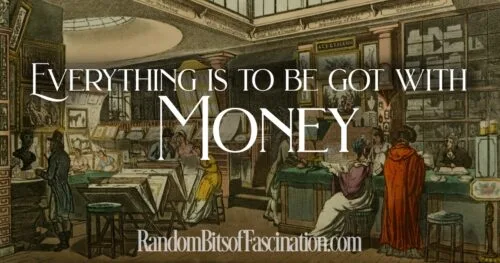Regency Currency Basics

With tax season on the horizon, the thought of finances and spreadsheets looms heavily on my mind. My accountant will soon be demanding my files, so of course, I’m doing the reasonable thing and procrastinating in a useful sort of way, writing this blog! LOL.
But to allay a little bit of the guilt, I thought I’d blog about money and finances for a bit. That should count right?
Talking about historical money is difficult for many reasons. To start with, the actual money itself may be very unfamiliar. So let’s begin with a primer in Regency money.
At the thousand foot view, we might summarize Regency era currency this way:
1 pound (£1 or 1l)= 20 Shillings
1 shilling (1s)=12 pence
1 pence (penny) (1d)= 4 farthings
Therefore: 1 pound=20 shillings=240 pence=960 farthings
So far so good, but things of course have to be a little complicated with the introduction of additional coinage and both names and nicknames for those coins.
2 farthings = 1 halfpenny (also called a ha’penny)
2 halfpence = 1 penny or pence
3 pence = 1 thruppence (also called a thrupenny bit or threepence)
4 pence= 1 fourpence (also called fourpenny bit or groat)
6 pence = 1 sixpence (also called a tanner or sixpenny bit)
12 pence = 1 shilling (also called a bob)
2 shillings = 1 florin ( also called a ‘two bob bit’)
2 shillings and 6 pence = 1 half crown (2s 6d)
5 shillings = 1 Crown (5s)
4 crowns= 1 pound (also called a sovereign)
10 shilling and 6 pence= ½ guinea
1 Sovereign = 1 pound (first issued in 1817)
1 pound and 1 shilling or 21 shillings =1 Guinea
The coins were made from bronze, cooper (for the pennies and less valuable coins), silver and gold, used only for the most valuable coins.
Prices would generally be described in pounds, shillings and pennies. So, one pound, 4 shilling and 6 pence would be described as one pound, four and six.
Now we have that cleared up, the next question is how to make sense of all the prices in terms we can understand today. Stay tuned for those answers and more.

Thanks for the clarification!